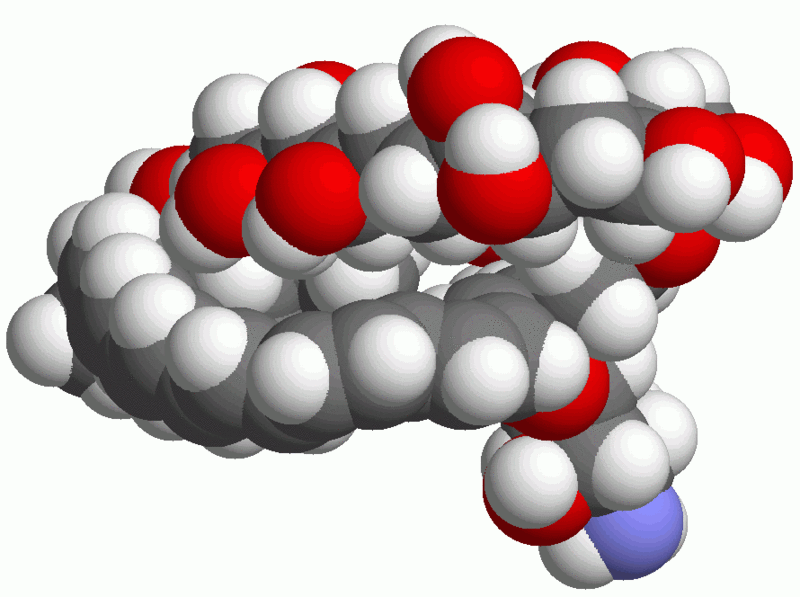 Wednesday, February 20, 2013 at 10:42AM
Wednesday, February 20, 2013 at 10:42AM "Amphotericin B (Fungilin, Fungizone, Abelcet, AmBisome, Fungisome, Amphocil, Amphotec) is a polyene antifungal drug, often used intravenously for systemic fungal infections. It was originally extracted from Streptomyces nodosus, a filamentous bacterium, in 1955 at the Squibb Institute for Medical Research from cultures of an undescribed streptomycete isolated from the soil collected in the Orinoco River region of Venezuela. Its name originates from the chemical's amphoteric properties. Two amphotericins, amphotericin A and amphotericin B are known, but only B is used clinically, because it is significantly more active in vivo. Amphotericin A is almost identical to amphotericin B (having a double C=C bond between the 27th and 28th carbons), but has little antifungal activity. Currently, the drug is available as plain amphotericin B, as a cholesteryl sulfate complex (ABCD), as a lipid complex (ABLC), and as a liposomal formulation (LAmB). The latter formulations have been developed to improve tolerability for the patient, but may show considerably different pharmacokinetic characteristics compared to plain amphotericin B."
systemic fungal infections. It was originally extracted from Streptomyces nodosus, a filamentous bacterium, in 1955 at the Squibb Institute for Medical Research from cultures of an undescribed streptomycete isolated from the soil collected in the Orinoco River region of Venezuela. Its name originates from the chemical's amphoteric properties. Two amphotericins, amphotericin A and amphotericin B are known, but only B is used clinically, because it is significantly more active in vivo. Amphotericin A is almost identical to amphotericin B (having a double C=C bond between the 27th and 28th carbons), but has little antifungal activity. Currently, the drug is available as plain amphotericin B, as a cholesteryl sulfate complex (ABCD), as a lipid complex (ABLC), and as a liposomal formulation (LAmB). The latter formulations have been developed to improve tolerability for the patient, but may show considerably different pharmacokinetic characteristics compared to plain amphotericin B."
"As with other polyene antifungals, amphotericin B binds with ergosterol, a component of fungal cell membranes, forming a transmembrane channel that leads to monovalent ion (K+, Na+, H+ and Cl−) leakage, which is the primary effect leading to fungal cell death. Recently, however, researchers found evidence that pore formation is not necessarily linked to cell death[4][5] The actual mechanism of action may be more complex and multifaceted."
Reader Comments